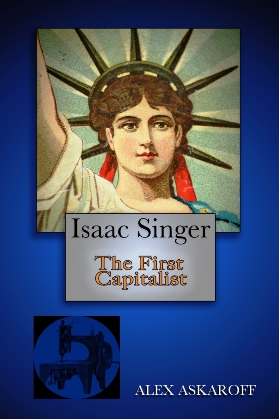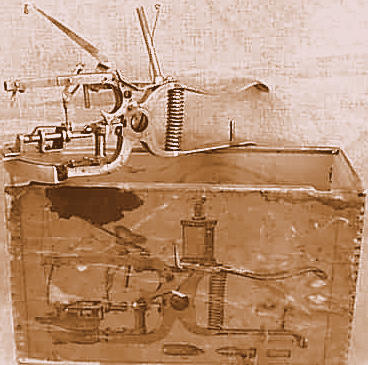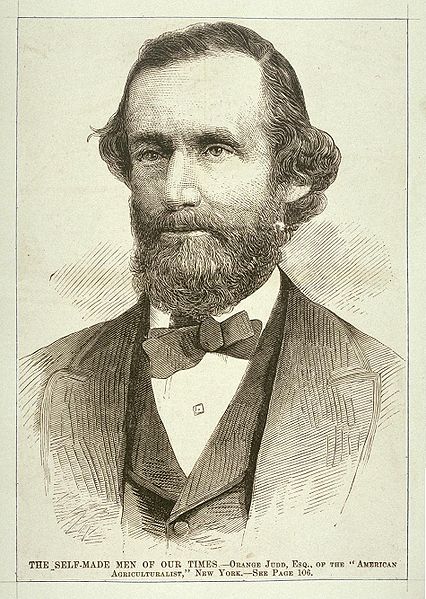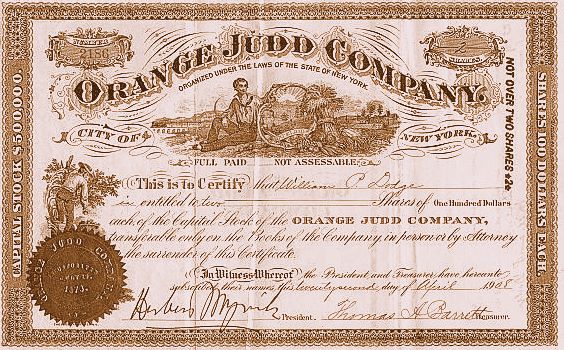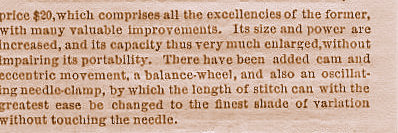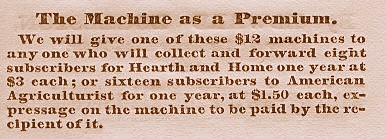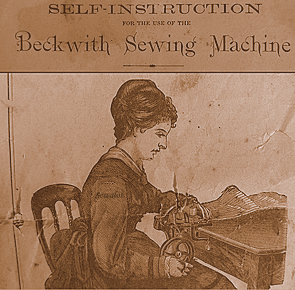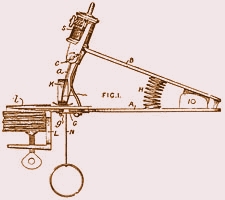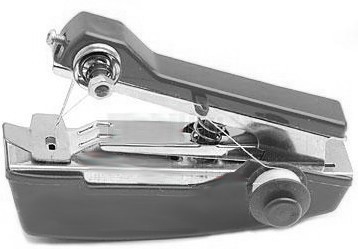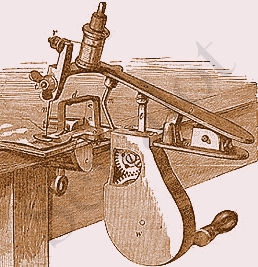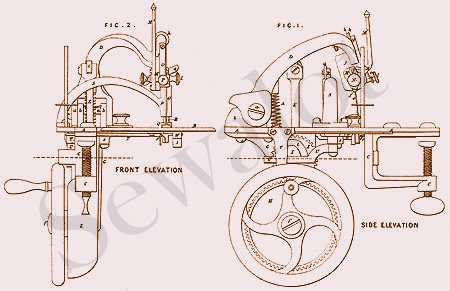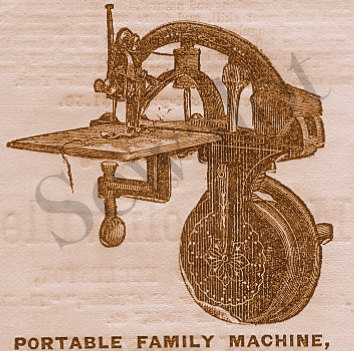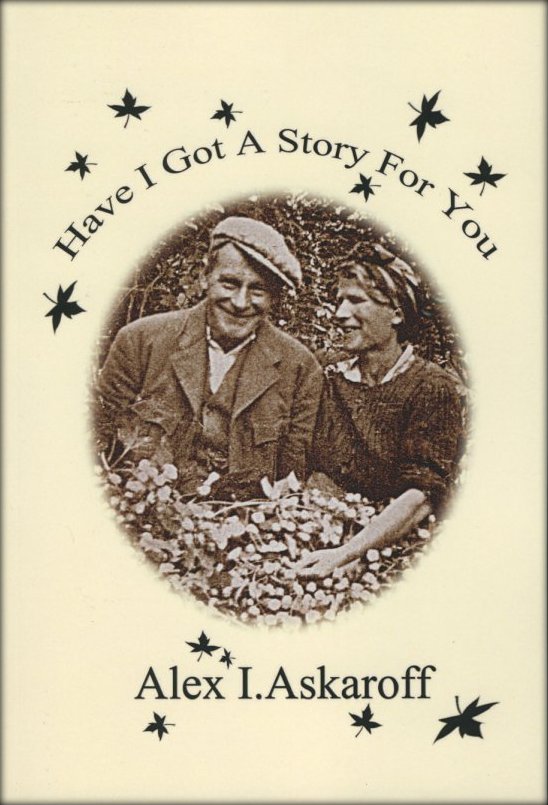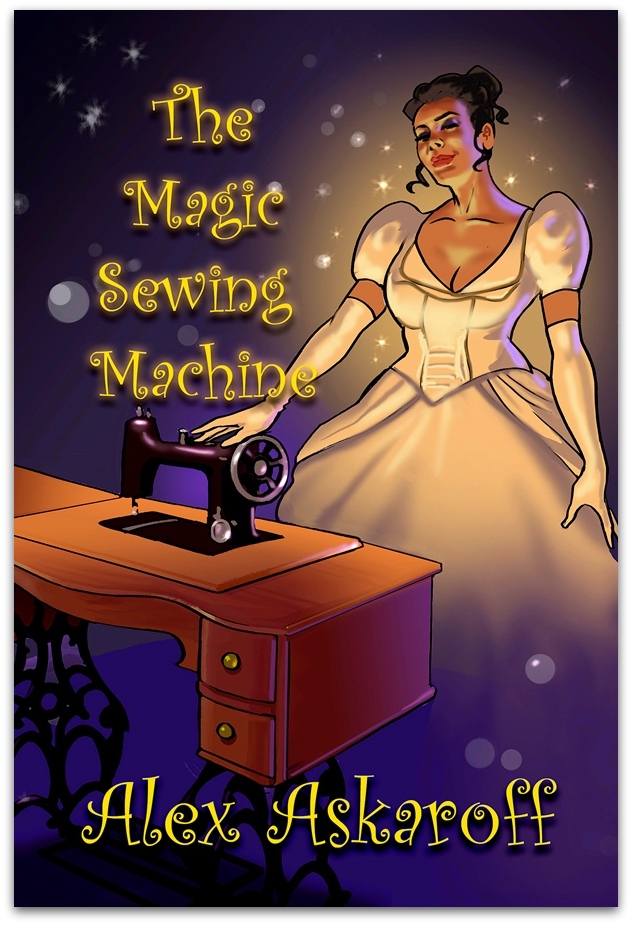|
|||||
|
|
Alex I Askaroff Alex has spent a lifetime in the sewing industry and is considered one of the foremost experts of pioneering machines and their inventors. He has written extensively for trade magazines, radio, television, books and publications world wide. Over the last two decades Alex has been painstakingly building this website to encourage enthusiasts around around the Globe.
See Alex Askaroff demonstrating antique sewing machines on YouTube http://www.youtube.com/watch?v=8-NVWFkm0sA&list=UL
|
||||
|
The Beckwith
sewing machine Gem Sewing Machine Beckwith Improved or MKII circa 1872 in my Sewalot collection. Beckwith Sewing Machine Company 1871-1877 To collectors, all four Beckwith sewing machine models, along with their minor variations, are highly prized. The first time I ever saw the scissor-action Beckwith tin-plate sewing machine I was transfixed. I immediately nicknamed the machine the Tin Opener and name has stuck. The sweet little table-clamp machine fed the work through the machine by a curved needle on a hinged bar which, as it lowered, moved (or rather dragged) the work through. The stitch was formed by the simplest hook that just held the thread and let it go on the next lowering of the needle. All-in-all the machine was little better than a toy and could never do anything but the most basic sewing. So how did it sell so well? and where did they all go? Today there are thought to be less than 100 surviving Beckwith sewing machines in the world. Even with Ebay Beckwith 'elastic loop' or Gem sewing machines rarely come to light. Diamonds are common compared to these little beauties... US Patent 18 April 1871
When William Gould Beckwith, who I am going to call Bill for our story, looked at the sewing machine market of the 1860's all he could see was pricey sewing machines. The idea of bringing a sewing machine onto the market that was cheap but reliable was brilliant, it would have immediate appeal to the masses.
Bill Beckwith's first machine would retail for $10 when Isaac Singers, Howe and Grover & Baker machines were many times that price. The $10 Beckwith sewing machine was rushed to a hungry market still full of flaws. The result was the hand-pull machine had to be quickly improved with a bolt-on hand-wheel assembly. The machine was still pretty useless but sales soared. Why? I shall explain...
Barlow & Son New York Barlow was an investor and manufacturer and made the first of the William Beckwith machines. W S Barlow, President. N D Barlow, Secretary. W G Beckwith, Treasurer. The rarity of Beckwith machines all all made sense when one day I spotted an advertisement for Beckwith sewing machines. At the bottom of the advert was printed, advertisement by the Orange Judd Company. It was not Bill Beckwith or Barlow, the main money men who originally invested in Bill's machine and paid for the patents, but it was suddenly being advertised by The Orange Judd Company of New York. So what was that all about? Orange Judd (1822-1892) was a self made millionaire and well known entrepreneur. Orange Judd was and agricultural chemist and member of the American Association for the advancement of science but more importantly he was and editor and had a publishing empire. It was to be publishing which had such a profound effect on the poor stitching Beckwith sewing machines. Let me explain more...
Orange Judd's brother, Davie Wright was proprietor of one of Orange Judd's (I love spelling that name, sounds like a pair of trendy trousers) periodicals called Hearth & home. Hearth & Home was one of Orange Judd's many periodicals. Bill Beckwith must have done a deal with Hearth & Home magazine where his machine were regularly advertised. He possibly advertised in many of Orange Judd's other agricultural magazines as well. Now back to the actual advert. The advert clearly shows that it was placed by the Orange Judd Company and it showed how you could get your Beckwith sewing machine absolutely free from Orange Judd. Free Beckwith ''Elastic Loop' Sewing Machines Half-way down the advert there is a little section explaining how to get your Beckwith sewing machine, not for $20 which the new Beckwith sewing machine was selling for, not $12 which the old model MKII was going for but $0, free!
So what was the catch? The catch was that you had to get 15 subscribers to Hearth & Home magazine to take one years subscription. Once you had done that you could claim your FREE BECKWITH SEWING MACHINE. I can only wonder during a serious recession how many people signed up for the 12 months then cancelled! Even better, sell eight subscriptions and get the cheaper and much lighter nickel-plated $12 Beckwith MKII or Improved Beckwith sewing machine free. Above and below the picture in the advert of the Beckwith sewing machine was how to get a Beckwith sewing machine without paying a red cent. If you managed to get 30 subscribers to the cheaper Orange Judd periodical called the American Agriculturalist you could also apply for a free Beckwith $20 MKIV sewing machine.
Now wonder orders at the factory were good. It explains everything, if the adverts were sponsored by Orange Judd in his periodicals they would be appearing all over America. Thousands of people would have taken up the offer. Thousands of Beckwith sewing machines would have been swapped for subscriptions to Orange Judd's range of periodicals. It did not matter that the Beckwith sewing machines weren't much cop. You would not have found out until after you had got all your subscribers and sent off for the free Beckwith sewing machine. By then you would have got the machine for nothing so you haven't really lost anything except a bit of hard work. I can just see the poor woman's face as she tries to sew her first dress on the Beckwith sewing machine. I can also see it flying in slow motion across the room! How to get your MKII or Improved Beckwith for free! The improved Beckwith was covered with two extra patents in May 1872 which helped with gear drive and was now nickel plated. How many machines did Bill Beckwith move like this? Probably thousands. Whereas the machine may not have been able to stand on its own feet by performance alone it would certainly sell on its easy availability and price. I wonder if the sales technique would work today. Get 15 subscribers to Help my Neighbour Monthly Magazine and we will give you a holiday to Majorca. Pyramid selling is still popular today and works like a dream, unlike the Beckwith sewing machine. So there we have, it is the reason that the Beckwith Sewing Machine Company made nearly 26,000 machines and the same reason why only a handful survived to this day. A free machine, great, but it was a poor stitcher, why bother to keep it? Chuck it in the bin... Beckwith history So what do we know about the Beckwith Sewing Machine Company? There are two main personalities connected with The Beckwith sewing machine, obviously William G. Beckwith but also William Barlow. The first patent in April 1871 was paid for by Barlow but clearly shows Bill Beckwith as the inventor. The Beckwith Sewing Machine Company, incorporating Barlow & Son, was born. The business settled into their premises on West Broadway, 862 Broadway, New York. From the beginning of 1872 the first Beckwith plunger sewing machines hit the market.
This machine was the poorest of them all, rushed to the Patent Office and into production with little thought as to normal use by the public. If you look below you will see the original patent, no hand wheel, just a plunger and separate table clamp. The idea was to clamp the little beastie to a table and use one hand to pull the work through, one hand to pull down the plunger and another to place and guide the fabric. Aah the problem is obvious, you need at least three hands to get the machine to work reasonably. Something had to be done and quick. Bill Beckwith immediately set about designing a hand-wheel to bolt onto his invention.
By April of 1872 the bolt-on hand-wheel was fitted to all Beckwith sewing machines. Also Bill advertised that, for a nominal sum of $2, he would fit the hand-wheel to all Beckwith machines that he had previously sold. The improvement was a good one but failed to address the fundamental weaknesses of the design that would be its downfall a few years later.
For the sum of $2 the hand-wheel was retro-fitted to nearly all the models. To my knowledge only one Beckwith survives without the optional hand-wheel attachment and the original pull cord. Mind you I bet there are a few more tucked away in the backs of drawers somewhere. November 26 1872 & December 31 1873, needle clamp patents From the summer of 1872 all Beckwith MKII models came with hand-wheels and were priced at $12 and known as the Improved Beckwith. Improved Beckwith Sewing Machine
To denote the improvements Barlow & Beckwith later painted the Beckwith sewing machines black and added gold work. Well worth the extra $2 for sure. If you have a nickel plated version you have the early Beckwith circa 1872. It will either be a MKI or the slightly improved MKII with hand-wheel and cast presser arm.
By November of 1872 Bill Beckwith had patented his new sewing machine model, Patent 133-351 with a completely new hand-wheel. The table clamp was now in with the body casting, not separate, this has become known as the third model of MKIII. You can see how the work is pulled or pushed forward by the scissor action of the two arms closing. 10,000 machines sold this season alone! I love that advert above. Was there a sewing machine season? In reality it should have said 'given away' not sold...And how many were sent back or just thrown away. Great for us collectors as it has made the Beckwith as rare as hens teeth. So how did it work? A simple way to demonstrate the fabric movement of the Beckwith (well not so simple my wife nearly strangled me trying to get it right!).
Place both hands together as in
prayer and with your wrists together and clap, we call that the 'seal
clap', try it. Place a pen or similar between the middle fingers
sticking out at right angles, like they have been shot through with an
arrow. Now grip the top side only of the pen with one hand but allow
the other loose so the pen can move freely through it. Swing the hand
gripping
the pen in an out, (clapping seal) keeping the EMPTY hand
perfectly stationary. Do the movement very slowly.
Now that Bill Beckwith had almost perfected his cheap sewing machine for the masses it was time to get some serious advertising underway. We have produced the best possible machine for the money without infringing any patent to date. We bring to the market a first-class family sewing machine with the weight of 7lb's. Thirty Day trial with money back guarantee. 1873, It was at this point in the Beckwith Company history that Barlow & Sons stopped producing the Beckwith sewing machines. This could have been due to the last Beckwith model far larger and heavier, the Beckwith MKIV.
It is possible that Barlow & Sons simply could not handle the very different fourth and final model the Beckwith MKIV. The MKIV was a sturdy beast double the size, mainly cast and weighing in at seven pounds. 1874, Beckwith Sewing Machine Company By 1874 all Beckwith sewing machines were marked Beckwith S.M.Co and the extra patent dates were added to the sewing plate. January 30, 1875 two thread chain-stitch patent filed. Bill Beckwith launched his best and final machine the Beckwith MKIV Portable Family Machine with flair in a number of popular periodicals. It was at this time that Orange Judd pushed the advertising in his papers and magazines. We can guess that Bill did a deal with Orange Judd to promote and sell his machines. I had to laugh when the papers even supplied testimonials to the machine in a bid to get sales. Any machine that relied on a bent needle to move the work was going to fail even with great advertising. The worked moved as much one way as it did the other!
1874 was a boom year for Bill Beckwith and the Beckwith Sewing Machine Company. They had finally come of age. Out of the handful of Beckwith sewing machines that do survive it is the MKIV Portable Family Machine that is more common. 1874 saw over 10,000 Beckwith MKIV's machines sold, oops, given away... Brilliant advertising through the American Agriculturalist, The Christian Union and Hearth & Home found new markets amongst people who could simply not afford the more expensive machines of the 1870's. Foreign patents were sought as were foreign agents in European countries.
Can be used without
injury to health
The British agents were George William Bacon & Co of London. I doubt if they sold many machines as the Beckwith Company was failing fast by this time. There was an advert for the Beckwith sewing machine being sold as a Gem sewing machine, possibly by Bacon in The Strand, London.
G. W. Bacon
As many as 26,000 Beckwith sewing machines were possibly made from 1872-1877. The Smithsonian Institute supplies manufacturing numbers as follows... Manufacturing Numbers of Beckwith Sewing Machines
1871, 1 to 3,500 The Christian Union paper 1873
Visit our Broadway premises for a free demonstration You can Cleary see a massive drop in sales from 1874. Why? well let us consider the facts. Orange Judd must have pushed what he thought was a good machine to his readers. He offered. via, Bill Beckwith, a machine that he thought would fill the gap between the expensive machines of the period and the huge hole in the market for a cheap machine for the masses. Only one problem with selling bad goods, they come back... It is easy to surmise that Orange Judd had machines returned to his papers, this would cause a loss of face with his main customer base. That had to be solved. The machine was probably dropped from his periodicals and that in turn probably caused a massive drop in sales. Sales can be seen from the figures above to drop dramatically after 1874 when we can assume they were removed from Orange Judd's periodicals. By 1877 no trace of the Beckwith Sewing Machine Company can be found. we can only guess that poor sales led to its demise and one more sewing machine company bit the dust. The full facts may one day come to light. By adding all that I have learnt about the Beckwith Sewing Machine Company to my site it might just allow others to take hold of the torch and continue the search. I bid you good luck and farewell. OUT NOW! Most of us know the name Singer but few are aware of his amazing life story, his rags to riches journey from a little runaway to one of the richest men of his age. The story of Isaac Merritt Singer will blow your mind, his wives and lovers his castles and palaces all built on the back of one of the greatest inventions of the 19th century. For the first time the most complete story of a forgotten giant is brought to you by Alex Askaroff. News Flash! Alex's books are now all available to download or buy as paperback on Amazon worldwide.
"This
may just be the best book I've ever read."
"My five grandchildren are
reading this book aloud to each other from my Kindle every Sunday.
The way it's written you can just imagine walking
beside him seeing the things he does. News Flash! Alex's books are now all available to download or buy as paperback on Amazon worldwide.
|
|||||
|
Well that's it, I do hope you enjoyed my work.
I have spent a lifetime collecting, researching and writing these pages and I love to hear from
people so drop me a line and let me know what you thought:
alexsussex@aol.com.
Also if you have any information to add I would love to put it on my
site.
Thank you for your article. I was lucky enough to stumble upon one and I am still pinching myself in disbelief. Your enthusiasm is infectious. Oyinda Man you have the best sewing machine site ever! |
|||||
|
|
|
||||
CONTACT: alexsussex@aol.com Copyright ©
As a
new collector I have found your site
has increased my knowledge in
a short time to a degree
that I couldn't have
imagined. |
|||||
